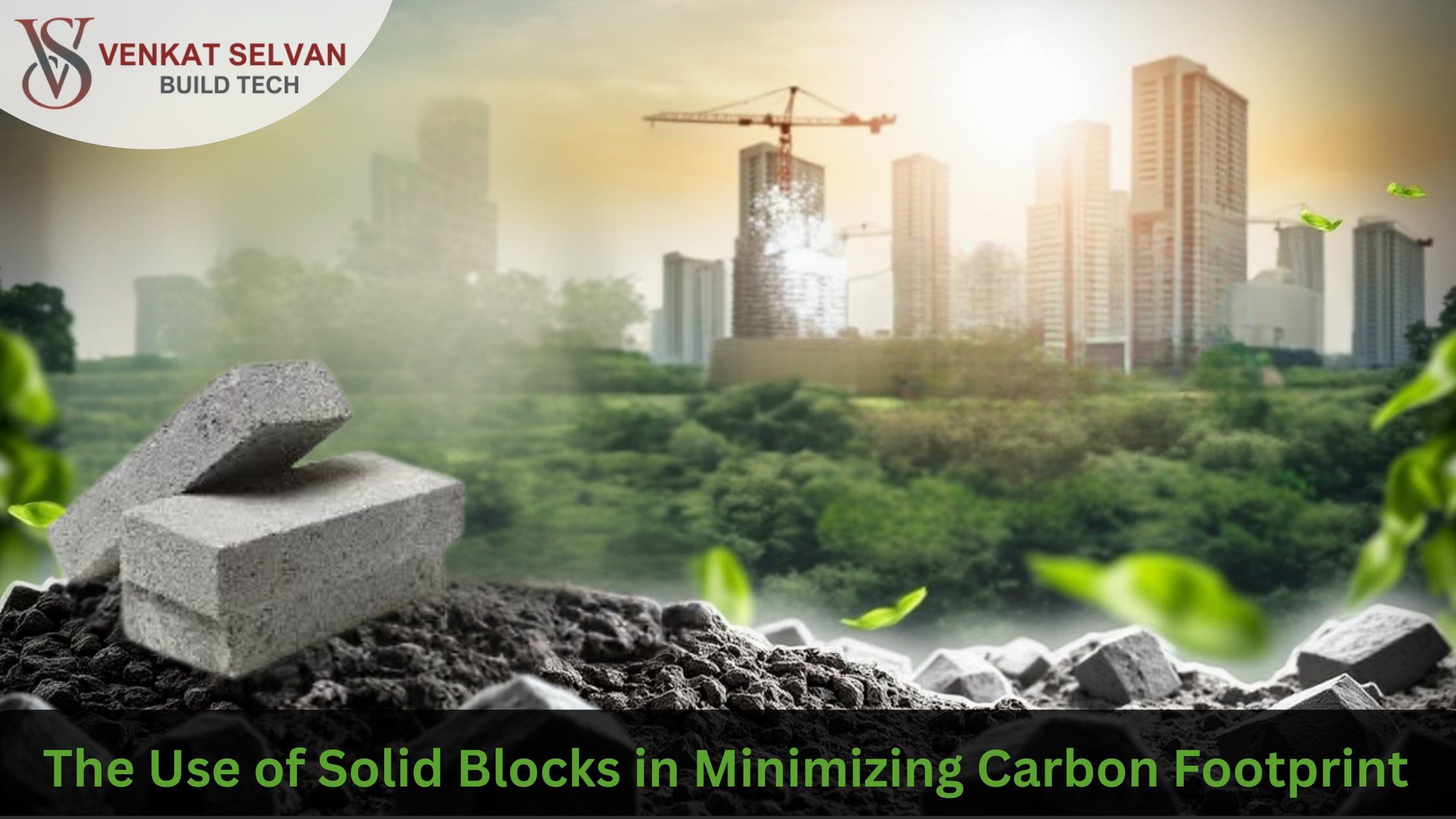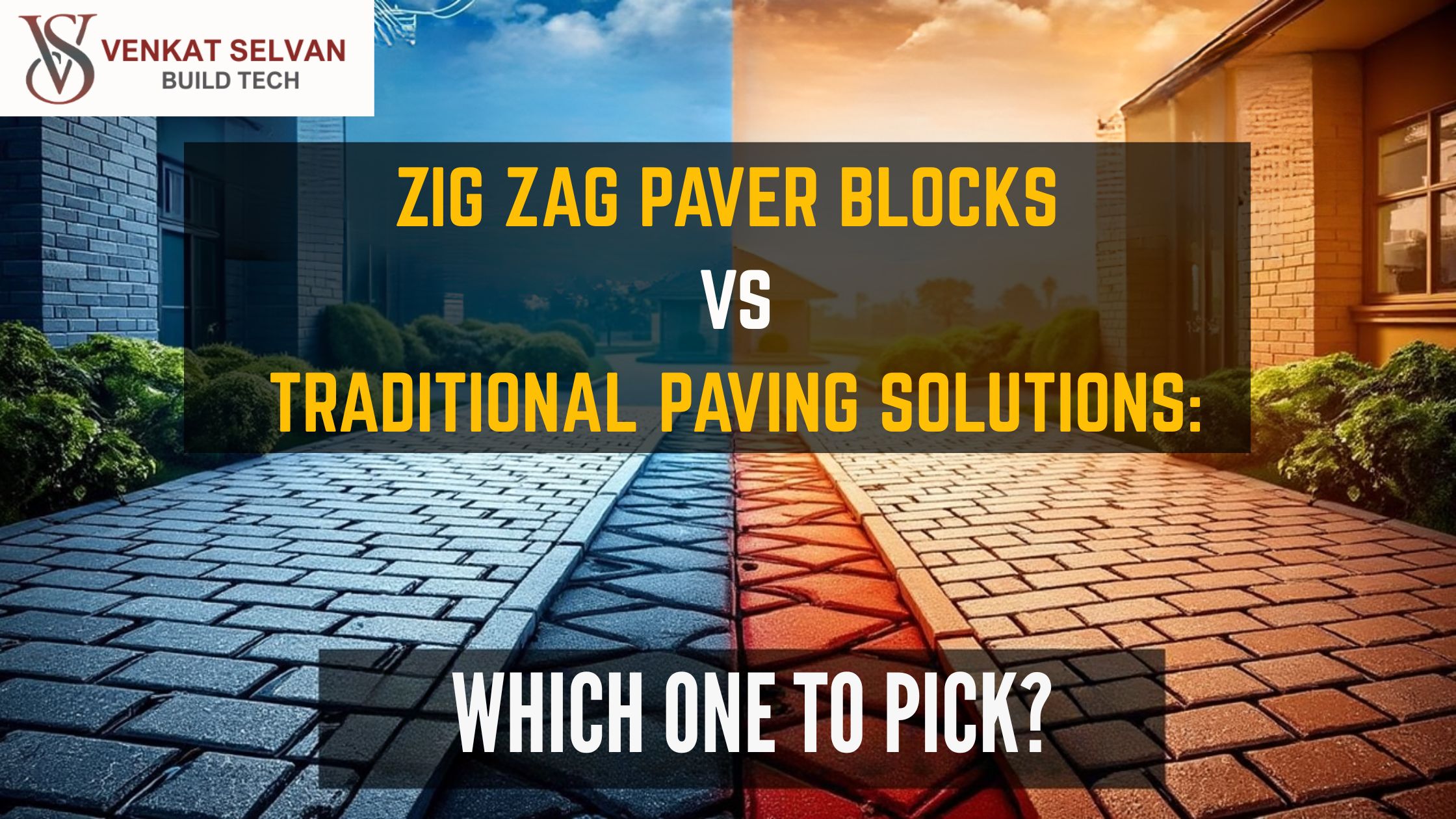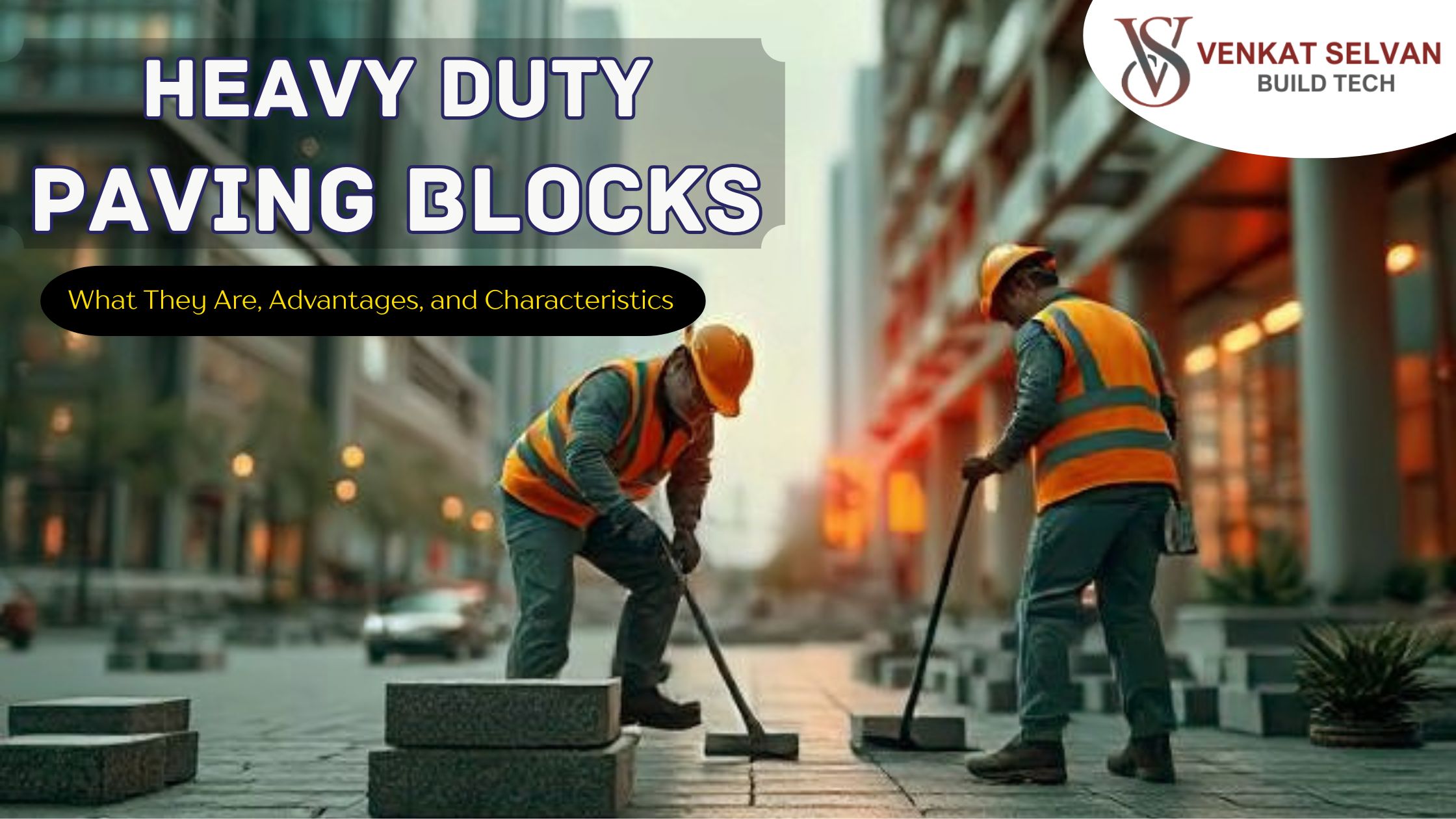Introduction
Solid blocks carbon footprint is now a hot subject of discussion as the building sector looks for sustainable substitute building materials. With buildings accounting for almost 40% of the world’s carbon emissions, there is a need to use construction methods that are not only efficient but also environmentally friendly.
The application of solid concrete blocks is one such solution that is gaining popularity—a substance renowned not only for its strength and durability but also for having a less environmental footprint.
Unlike traditional clay bricks, solid blocks may be produced with less energy and greener raw materials, such as industrial waste byproducts. As the construction industry moves toward sustainable construction, having knowledge of the contribution of solid blocks to lowering the carbon footprint is vital to architects, builders, and policymakers.
Understanding Carbon Footprint in Construction
The carbon footprint of a building project encompasses the overall greenhouse gases (GHG) produced throughout the building’s lifecycle—from the extraction of raw materials to manufacturing, transportation, construction, usage, and demolition.
Conventional materials like clay bricks involve high-energy processes such as kiln firing, which emit large amounts of CO₂.
On the other hand, solid concrete blocks, especially those made from industrial byproducts, offer a more eco-friendly alternative with both environmental and economic benefits.
What Are Solid Blocks?
Solid blocks refer to precast concrete units used in both load-bearing and non-load-bearing walls. Compared to hollow blocks, they are denser and heavier, offering better strength and durability.
They are made from:
- Cement
- Sand
- Aggregates
- Fly ash or slag (industrial waste byproducts)
These blocks are widely used in modern construction due to their:
- Standard shape
- High compressive strength
- Acoustic insulation
- Fire and pest resistance
- Sustainability benefits
How Solid Blocks Reduce Carbon Footprint
1. Efficient Manufacturing Process
- Solid blocks require less energy to manufacture than traditional bricks.
- While clay bricks are fired at high temperatures (up to 1000°C), solid blocks are often cured at ambient temperatures.
- Some production methods use steam curing or autoclaving, which, although energy-intensive, are still more efficient than brick kilns.
- Further carbon savings can be achieved by integrating renewable energy into the manufacturing process.
2. Industrial Waste Materials Usage
Solid blocks can incorporate the following industrial byproducts:
- Fly ash (from coal-fired power stations)
- GGBS (Ground Granulated Blast Furnace Slag)
- Silica fume (from silicon production)
- Recycled aggregates
Benefits include:
- Reduced demand for virgin materials
- Minimization of industrial waste going to landfills
- Lower overall carbon emissions
3. Thermal Efficiency and Energy Savings
- Solid blocks provide better thermal insulation than clay bricks.
- Buildings constructed with solid blocks require less energy for heating and cooling.
- This results in significant energy savings and lower operational carbon footprint over time.
4. Durability and Longevity
- High strength and low water absorption make solid blocks long-lasting.
- Reduced need for repairs, maintenance, or early replacement.
- Lower frequency of renovations = lower long-term environmental impact.
5. Lower Transportation Emissions
- Solid blocks can be manufactured locally, close to urban construction sites.
- Reduced transportation distances lead to lower fuel consumption and logistics-related CO₂ emissions.
Environmental Certifications and Green Building Standards
Using solid blocks can help projects qualify for green building certifications, including:
- LEED (Leadership in Energy and Environmental Design)
- IGBC (Indian Green Building Council)
- GRIHA (Green Rating for Integrated Habitat Assessment)
These certifications reward the use of:
- Low-carbon materials
- Energy-efficient construction methods
- Sustainable sourcing practices
Economic Benefits Alongside Sustainability
Contrary to common belief, green materials like solid blocks can be cost-effective:
- Faster construction due to consistent sizing
- Reduced plastering costs from smoother finishes
- Less material waste during on-site handling
- Lower mortar usage, especially with interlocking designs
These factors help offset initial costs and deliver long-term value.
Challenges in Adoption
Despite their benefits, the adoption of solid blocks faces a few challenges:
- Limited awareness among small builders and contractors
- Resistance to change from traditional clay brick usage
- Perceived higher costs due to lack of knowledge about long-term savings
- Scarcity of trained labor experienced with concrete block systems
However, growing environmental awareness and government incentives are helping to overcome these hurdles.
Government Support and Policy Direction
Governments are increasingly encouraging sustainable construction practices:
India-Specific Initiatives:
- PMAY (Pradhan Mantri Awas Yojana) promotes alternative construction technologies
- Bureau of Energy Efficiency (BEE) supports energy-efficient building design
- State building codes are beginning to recommend or mandate low-carbon materials
Such policies are crucial to:
- Generate market demand
- Promote eco-friendly practices
- Scale sustainable construction across regions
Future Outlook
With global climate goals becoming more ambitious, the construction sector must evolve rapidly. Solid blocks are expected to play a central role in this low-carbon revolution.
Emerging trends include:
- Advanced block designs
- Automation in manufacturing
- Integration of carbon capture technology
As awareness among developers and consumers grows, demand for green building materials—especially solid blocks—is expected to rise significantly.
Conclusion
The building sector stands at a critical turning point. In the face of climate change, choosing sustainable materials is no longer optional—it is a responsibility.
Solid blocks offer a realistic, cost-effective, and environmentally sound solution to lower the carbon footprint of buildings.
Their benefits include:
- Utilization of industrial waste
- Enhanced thermal performance
- Durability and longevity
- Lower emissions across the building lifecycle
By adopting solid blocks, builders, developers, and homeowners can take a concrete step toward a sustainable future—one block at a time.



